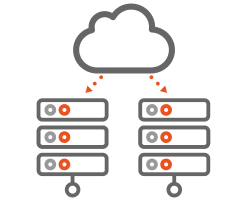OpenStack challenges 2022
Tytus Kurek
on 6 January 2022
Tags: cloud , edge , micro cloud , MicroStack , OpenStack , Private cloud
Happy New Year 2022! The fireworks are all fired, the champagne is over. It is time to get back to work. We are glad to see you here though. 2021 was a good year for OpenStack and its Ubuntu-based community.
First, we all have seen Ubuntu becoming the number one operating system (OS) for OpenStack deployment. Then, the Open Infrastructure Foundation (OIF) reported explosive growth in the number of production OpenStack clouds. The community grew and settled on the most convenient platform.

But 2022 comes with a new set of challenges that many organisations are going to face sooner or later. What are those challenges? Let’s find out.
OpenStack on the edge
The edge is undoubtedly going to become one of the most actively developed areas of information technology (IT) infrastructures in the following years. Telcos, factories and car manufacturers are just examples of organisations that are already pursuing an edge strategy. But is OpenStack really suitable for the edge?
OpenStack was designed as an infrastructure-as-a-service (IaaS) solution for traditional data centres. It manages distributed compute, network and storage resources, aggregates them into pools and enables on-demand provisioning of virtualised resources through a self-service portal. It has proven itself in this role and become a de-facto standard for building an open-source cloud infrastructure.
However, the edge presents completely new challenges compared to traditional data centres, especially around size and quantity. In traditional data centre architectures, there are not many sites, while each of them spans across hundreds of high-density servers. On the contrary, at the edge, there are thousands of sites, but each of them consists of just one or a few low-cost small devices.

As a result, to be successful at the edge, OpenStack needs to be optimised for both the low size and large quantity. All upstream and commercial OpenStack platforms which have ignored those challenges have been struggling to get commercial adoption in the last years. An OpenStack platform optimised for the edge must come with a minimal footprint, straightforward installation instructions and fully automated day-2 operations to reduce the maintenance overhead.
Start small, grow-as-you-go
Historically, OpenStack was mainly used by telcos, local public cloud providers, financial companies, research institutions, etc. – all of these kinds of big players. OpenStack clusters consisting of hundreds of nodes were not uncommon. 2022 will bring a change in this matter.
In 2022, we are going to see a growing demand for an OpenStack platform that can be deployed on a very small scale and grown flexibly as the demand for resources increases. This is coming from the fact that more and more organisations are repatriating their workloads from public clouds back to an on-premises infrastructure these days. This trend applies to small and mid-size companies too. Such companies usually do not run a significant number of business applications. As a result, they do not need a large private cloud infrastructure to start.

The same applies to VMware or Proxmox customers who have been running some small virtualisation clusters for years. While the constantly growing cost of maintaining the proprietary infrastructure forces them to look for some open-source alternatives, building an OpenStack cloud from scratch across tens of nodes might be overkill. Therefore, a truly cost-effective OpenStack platform needs to provide the ability to scale. Start small and grow-as-you-go.
Use the same platform everywhere
Yes! This has always been a challenge with on-premises infrastructure. In public clouds, things are easy. Production environments, continuous integration / continuous delivery (CI/CD) pipelines and developer virtual machines (VMs) all run on the same platform. Both developers and DevOps use the same tools to test, deploy and operate business applications. Everything is well-integrated and the entire framework works like a Swiss watch.
Therefore, ensuring the same experience when migrating to OpenStack is essential. This is very challenging though. Providing each individual team member with a dedicated OpenStack cluster so that they could play and experiment with it might end up being very expensive, if possible at all. This is because most commercial OpenStack platforms require at least a few nodes and come with a mandatory paid subscription.

This is why it is essential to standardise on an OpenStack platform that can be used at any scale, from single-node installations to large-scale clusters. Using the same OpenStack platform across production environments, CI/CD pipelines and developer workstations removes friction, mitigates the risk of misconfiguration or misoperation and boosts developers’ productivity.
Aid your 2022 cloud strategy with MicroStack
It is never too late to adjust and optimise your strategy for success.
MicroStack is a pure upstream OpenStack platform, designed for the edge and small-scale private cloud deployments, that can be installed and maintained with minimal effort.
Get started with MicroStack by following a series of tutorials for beginners
or
get in touch with Canonical for more help on your commercial projects.
One more time, Happy New Year 2022!
Smart operations, optimal architecture, better pricing.
OpenStack and Ubuntu bring automated deployment and management that help you optimise infrastructure costs — no matter your industry or use case.
Newsletter signup
Related posts
OpenStack with Sunbeam as an on-prem extension of the OpenStack public cloud
One of the biggest challenges that cloud service providers (CSPs) face these days is to deliver an extension of the public cloud they host to a small-scale...
OpenStack with Sunbeam for small-scale private cloud infrastructure
Whenever it comes to a small-scale private cloud infrastructure project roll-out, organisations usually face a serious dilemma. The implementation process...
Canonical provides the ideal platform for Microsoft Azure IoT Operations
London, 19 November 2024. Canonical has collaborated with Microsoft as an early adopter partner and tested Microsoft Azure IoT Operations on Ubuntu Core and...
